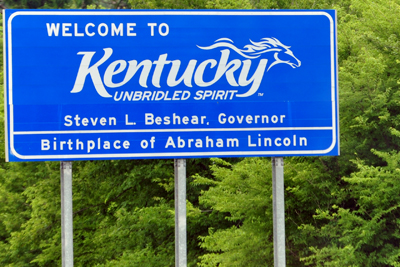
 |
in Cave City, Kentuckyand surrounding areas |
Kentucky Down Under - Kangaroos, Emus, birds, The Kentucky Cave - plus the Mystery House, Mammoth Cave National Park and more..... |
|
Kentucky Down Under
|
|
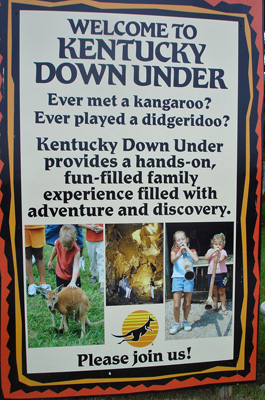 |
Kentucky Down Under is a hands-on, interactive, learning adventure that provides an introduction to Australian history, and culture, and animals. The admittance fee includes a Tour of Kentucky Caverns, an active cave where guides interpret the geology of karst areas and the importance of protecting caves and ground water. Cave temperatures remain about 60º year round.Even though the two RV Gypsies have been to Australia, they found this to be an interesting place. |
Below: The two RV Gypsies as they first entered Kentucky Down Under. Karen Duquette thought it appropriate to wear her Australia shirt and hat that she purchased when actually in Australia. One of the workers actually tried to get Karen to give him her Australia hat. NO WAY! |
|
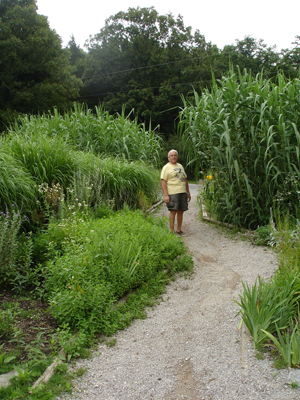 |
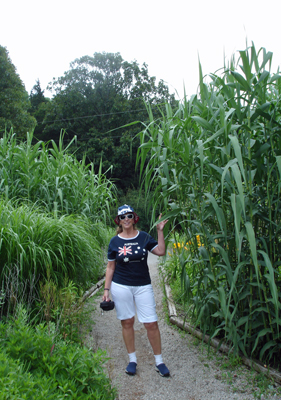 |
 |
|
Below: Terra Rosella |
|
The first stop of the two RV Gypsies in Kentucky Down Under was in the aviary Terra Rosella. An interpreter provided each of the two RV Gypsies with a cup of seed to hand feed the colorful budgies as they flew all around the area. However, the birds were not very hungry at this time. |
|
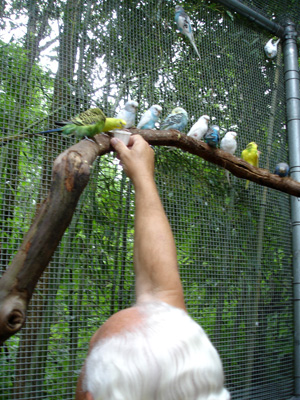 |
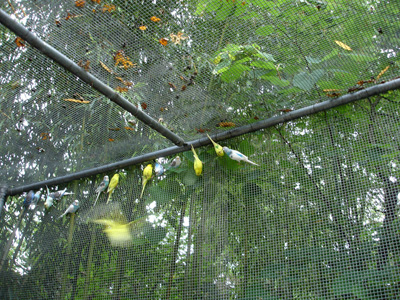 |
Below: The Bird Garden |
|
The Bird Garden had some of Australia's most unique birds, each in their own large cage. This was a self guided tour with no time limit. |
|
|
|
|
|
|
Kookaburra - SCIENTIFIC NAME: Dacelo novaeguineaeRANGE: The Laughing Kookaburra is endemic to the forests and woodlands of eastern Australia.HABITAT: This Kookaburra dwells in open forests, and woodlands, predominantly old growth forests that have hollows or where termites build nests in trees.* The call of the Kookaburra sounds like crazy laughter. |
|
* The Papuan Frogmouth secretes a substance in its mouth that attracts
flies. |
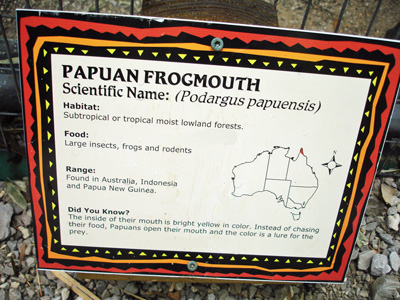 |
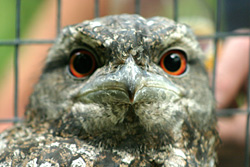 |
SCIENTIFIC NAME: Podargus papuensisRANGE: The Papuan Frogmouth is confined to the Cape York Peninsula in Australia, New Guinea and parts of Indonesia.HABITAT: It occurs in rainforests, mangroves and dense riparian vegetation. |
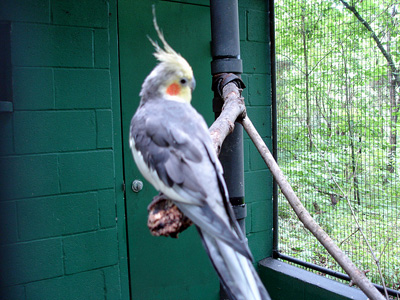 |
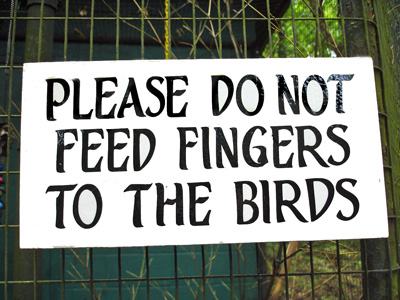 |
Below: The Land of Lories |
|
The Land of Lories is a giant enclosure that houses stunning, colorful lorikeets. An interpreter at the entrance gave each of the two RV Gypsies a cup of nectar to feed the Lories. Once inside the enclosure, the two RV Gypsies held the nectar cup out, and the brilliant, inquisitive birds landed on their heads, shoulders and arms to help themselves to the nectar cup until it is all gone. There was also a mister (spray of water) there which was definitely needed on this hot day. |
|
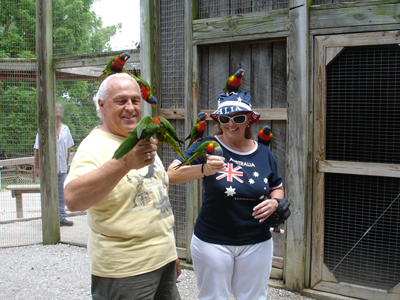 |
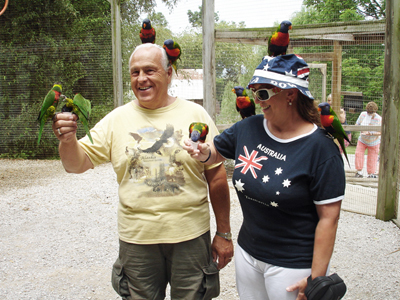 |
SCIENTIFIC NAME: Trichoglossus haematodus [moluccanus]RANGE: They live in the northeastern coast of Australia, around to Eyre Peninsula in South Australia, the Pacific islands, Papua-New Guinea and Indonesia.COOL FACTS: * Their tongues are shaped like a brush to collect nectar. |
|
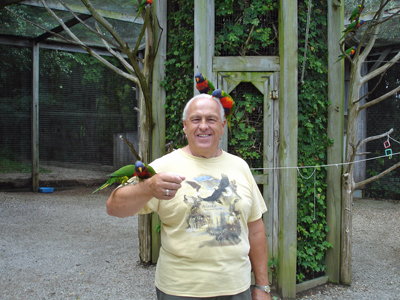 |
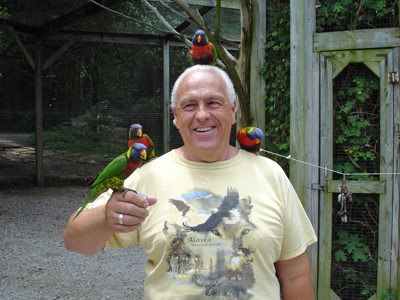 |
Below: The Outback Walkabout - a 30-minute guided tour |
|
SCIENTIFIC NAME: Macropus rufusRANGE: From the central western Australian coast to the western side of the Great Dividing range.HABITAT: Most often the dry arid areas.COOL FACTS: * Male Red Kangaroos are twice the size of females. |
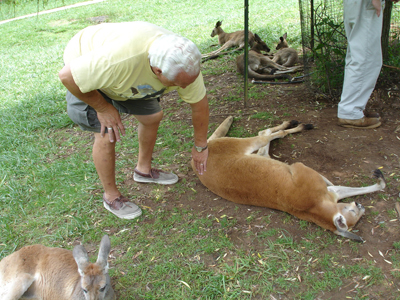 |
Below: The guide told Lee Duquette to check out the kangaroo's tail because the tail alone weighs about 15 pounds |
|
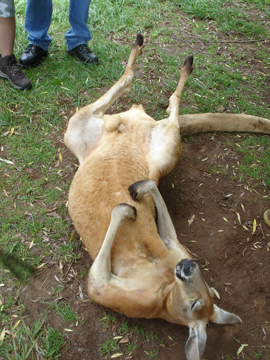 |
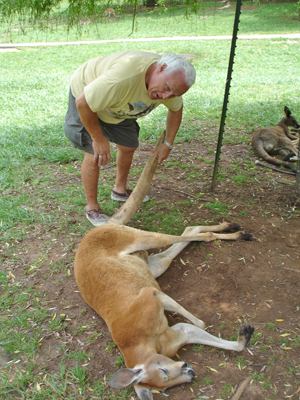 |
 |
Below: Emus |
SCIENTIFIC NAME: Dromcaeus, novaehollandiaeRANGE: Throughout Australia, except for the tropical rainforests.HABITAT: They inhabit open grasslands, savannas (grasslands with some trees) and sclerophyll forests in the Australian bush.COOL FACTS: * Emus can live up to 30 years. |
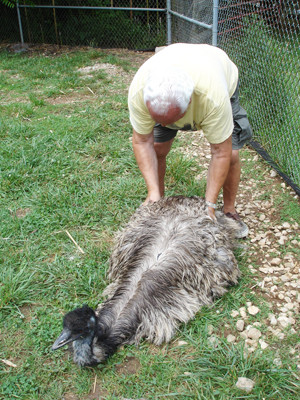 |
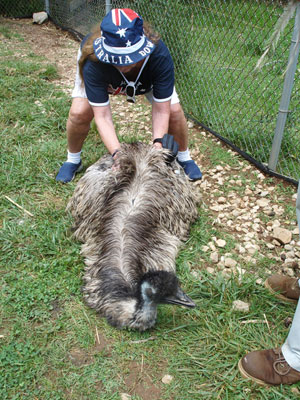 |
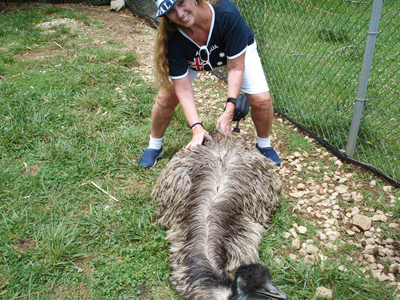 |
The shell of an emu egg |
|
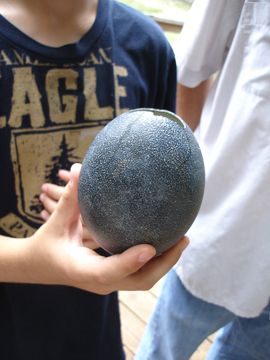 |
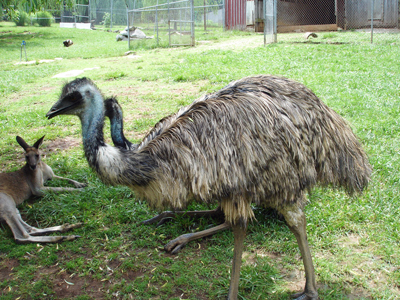 |
Below: Then the two RV Gypsies went to Kentucky Caverns |
|
| This is an easily accessible cave. It was discovered in 1799, and opened to public tours in 1922. This is an active cave: when it rains, the water drips down through the ground and into the cave continually creating new formations! There are many different formations to behold in the cave, such as stalagmites and stalactites, cave popcorn and cave cauliflower. | |
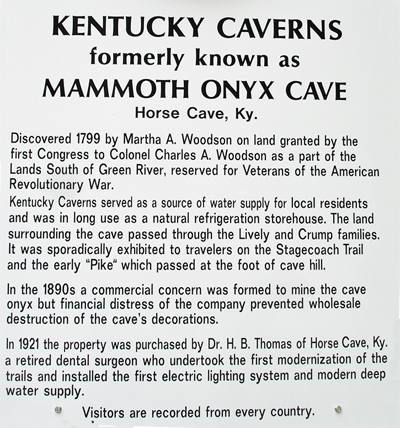 |
 |
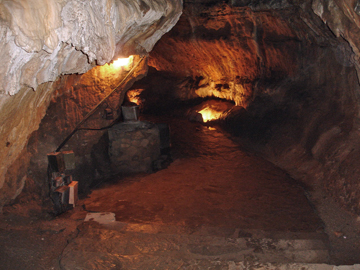 |
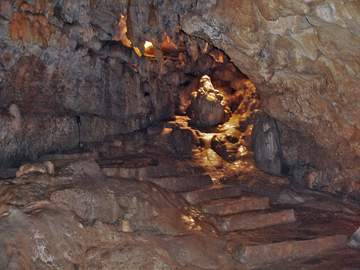 |
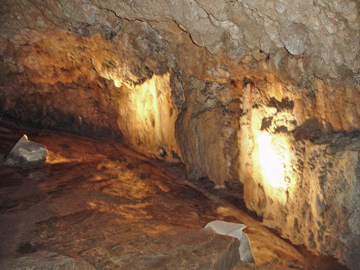 |
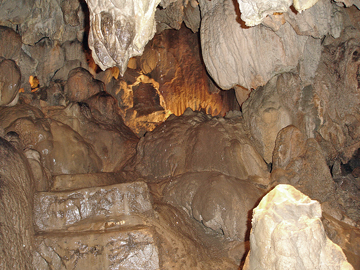 |
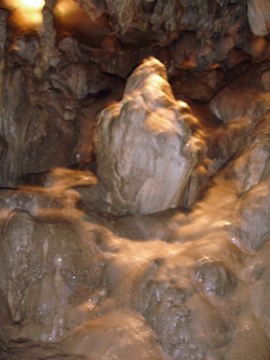 |
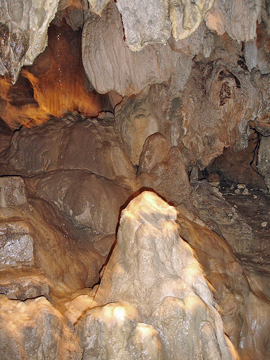 |
Below: Water was dripping
on Lee Duquette as he walked through a narrow area of the cave. |
|
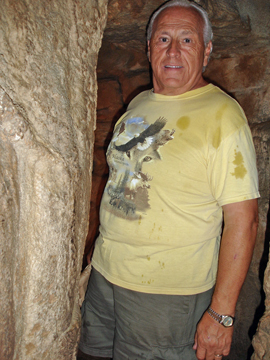 |
|
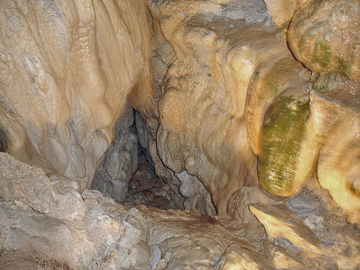 |
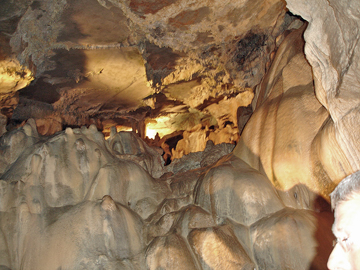 |
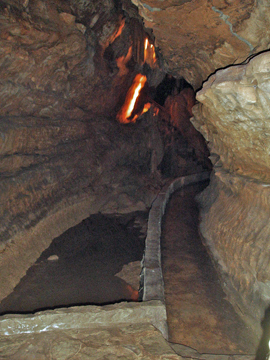 |
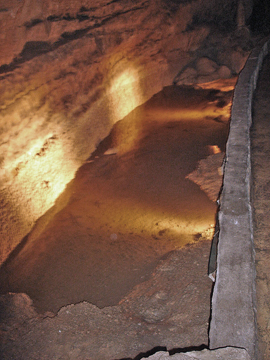 |
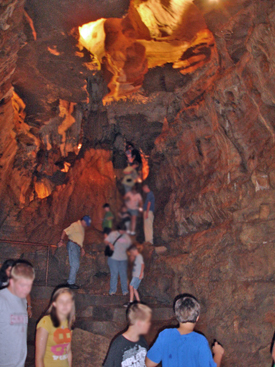 |
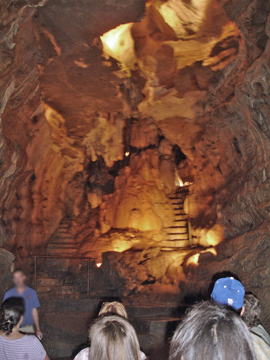 |
Below: As the tour approached
the exit doorway, big fat tree roots were creeping their way into the
cave. |
|
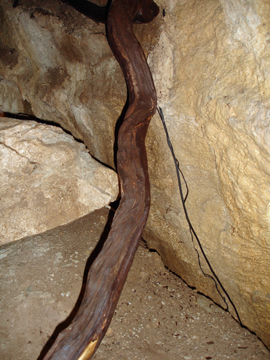 |
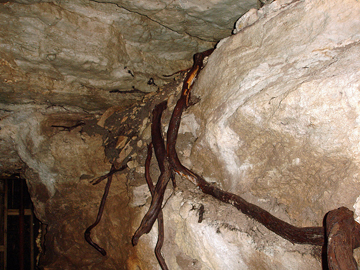 |
Below: A salamander hiding in the cave |
Below: The exit door |
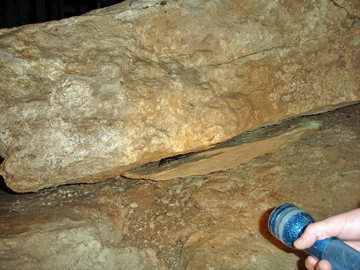 |
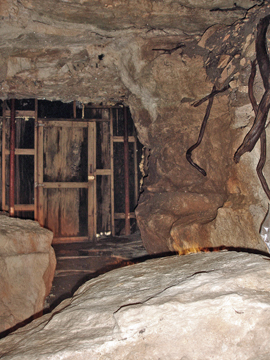 |
Below: The Outback Cafe |
|
| An expedition through the Land Down Under can make an explorer hungry. Luckily, the Outback Cafe stands ready to help. The Outback Cafe serves a variety of salads, sandwiches, hot dogs, a Bison Burger, and several Australian meat pies. The two RV Gypsies enjoyed the Australian meat pies. | |
| |
|
| Below: Other sections within Kentucky Down Under: Note: the two RV Gypsies did not explore these other sections because they had seen these type of demonstrations when in Australia. Plus it was a hot day. | |
The Woolshed gives a 45-minute presentation about life on a working sheep station and a few of the guests get to milk a cow, or feed the lambs. (The two RV Gypsies did both at a real working farm in Australia). Here at Kentucky Down Under, there is a parade of rams - nine different kinds of rams take the stage while the interpreter explains what's different about each breed, and what their different wools are used for. | |
Camp Corroboree - In Australian Aboriginal culture, a Corroboree is a gathering, much like a Native American Pow Wow. At Kentucky Down Under, the Camp Corroboree introduces the Aboriginal culture. At the Dog Herding Demo, border collies and their experienced handlers work a flock of sheep in an open field. The audience is invited to participate in daily chores. A display of various breeds of rams is included. |
|
Gem Mining -- Students discover genuine gemstones as they sift their bag of sand in the water sluice. Available by prior arrangement at a cost of $3.00 per student. |
|
| The Nature Trail is a hike through a natural hardwood forest. | |
| There was also a gift shop and Fudge Factory. | |
|
Plus Big Mike's Mystery House and gift shop,
Big Mo, and more |
OR After you have seen all of the above,Continue Navigation in any year, any place, in the order
of your choice |
|||||

|
|||||
 |
 |
 |
 |
 |
|
 |
 |
 |
 |
 |
|
 |
 |
 |
 |
 |
 |
 |
 |
 |
 |
 |
 |